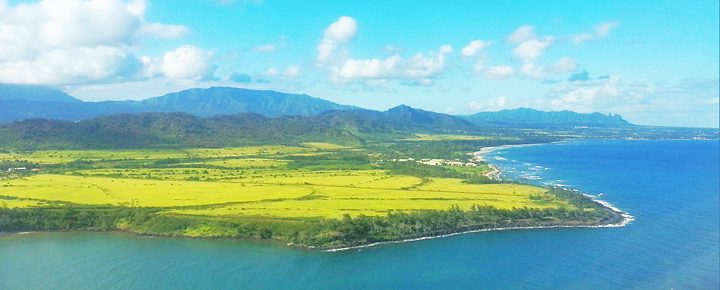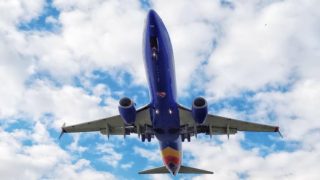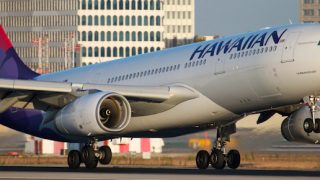It is clear that airline technology innovation will be at the forefront of providing many aspects of the changes coming to Hawaii flights and to air travel overall. Tools like these will allow the airlines to rapidly adapt in today’s environment.
Airline technology company Farelogix, just announced such initiatives. Airlines are implementing their solutions for a myriad of things, including facilitating in-flight distancing, refunds and new boarding plans. These go beyond many other solutions we have seen recently.
First, Farelogix automatically adjust seat maps. This will offer individual travelers seating options that are apart from other people onboard Hawaii flights, while enabling flexibility needed for families traveling together. You have been asking about how this might work in comments recently and this could be one such innovative solution.
Jim Davidson, CEO of Farelogix said that airline customers are using their software “to support an efficient approach to enabling safe physical distancing across a variety of seat configurations, on both narrow and wide-body aircraft.”
The distancing solutions go much further than the blocking of middle seats. Different “travel unit types” (family, single, couple) require flexible logic. That in addition to the fact that rules may be relaxed under certain circumstances and over time. This software lets airlines easily modify rules, in real time, to adapt to market specific conditions (think Hawaii flights).
The customized, dynamic service is said to work via call centers, websites, mobile, check-in kiosks, call centers, and travel agencies. Farelogix said that its products have been used by “United Airlines, Delta Air Lines, Hawaiian Airlines, Air Canada, Alaska Airlines, Emirates, and Etihad Airways.”
A second Farelogix solution airlines are already using, gives them the ability to rapidly deploy changes to eligibility and refund rules in this fast-evolving environment. And yet another offering supports the implementation of modified zone boarding plans wherein the back of the plane may be on-boarded first.







We have traveled more than a dozen times to Hawaii. I remember years ago you boarded from the back forward, it just makes sense, then inboard from the front back. That way no one is climbing over each other. Overhead bins should only be for the seats directly underneath. I dont know how many times we got to our seat to find no storage. Early boarding for children with families or people with disabilities only.
Thank you for making a difference.
Hi Bob.
Thanks.
Aloha.
I been to Hawaii so many times The Big Island. Anyway I work at a trauma center here in California and I seen this coming so a few weeks ago I cancelled my ticket with Alaska Aur from San Jose to Maui . I asked for a refund for two reasons to protect HAWAII and also knowing it was going to get worse.
Alaska Air would not refund me I made hundreds of attempts even called Seattle corporate and they were jerks. They said you have the super saver fare only credit given.
THE REASON WHY I am writing here is because they won’t give me a guaranteed ticket to Hawaii when things clear up. ONLY A CREDIT.. I feel Alaska should guarantee a ticket back to Hawaii not just a dang credit or give me the money back. ALASKA IS HORRIBLE… next time it will be Hawaiian or Delta etc. They will not give the money back or guarantee my HAWAII TICKET BACK TO HAWAII only a flight credit. I hope my concern is ok here
From everything I’ve seen, Alaska Air has been very poor about cooperating with their customers. They were still selling seats on flights even after they knew that those flights would not be going. And they have played the “we didn’t actually cancel it” game. I’m with you – from now on I will avoid Alaska Air.
We try to sit near the front, and as I have mobility issues, I am granted early boarding. We always see people who are walking toward the back putting their bags in the overheads in the front. Then what happens when those sitting in the front board ? No overhead. They have to go several rows back to find a place. Therefore, exiting the plane is a mess. I do not think back-of-the-plane boarding works well.
Thank you for putting this newsletter together, it’s wonderful.
Hi Kitty.
Thanks very much!
Aloha.
Thank you for the information. I look forward to flying back to hawaii soon but not on a crowed plane. Yes we need social distances. . 🙂
Stay Safe.
JetBlue in warmer temperatures especially has things right….board from both the front and back. Seems like if airlines could save 20 minutes boarding per flight they could slip an extra one in per day….then in colder climates just create two boarding gates.
Back of the plane first boarding is a good idea, just need to ensure those folks dont use the overhead bins until they reach their assigned rows to avoid chaos at destination.
I agree! The problem comes when the back of the plane uses the bond up front so that needs to be monitored
Thank you for your ongoing information. These are trying times and your site keeps us up to date in real time. We love Hawaii and hope traveling to the island(s) will be possible in the safe future. Just wanted to say thank you for your hard work. Aloha
Hi Susan.
Thanks very much!
Aloha.
This is just dumb. Airlines won’t be able to survive if they can’t fly the planes full of passengers… especially after coming out of a complete shutdown.
The reality is that there has ALWAYS been a chance that you might catch SOMETHING out in public–particularly on an airline flight full of random travelers from around the world. The whole “social distancing” thing was put into place BEFORE the whole “wearing masks” thing. Call social distancing “level 1” and masks “level 2”. Well, once you escalate to level 2, level one isn’t really that important anymore. It might add SOME, TINY extra percentage of protection. But not significant. Passengers can also choose to wear protective clothing, gloves, etc if they so choose. At level 2 (everyone wearing masks and airlines sanitising reasonably between flights), the overall risk of infection is likely lower than it was BEFORE the panic–which was generally accepted as “reasonably low”.
Also, of course, there could be some passenger screening / scanning before boarding if the CDC or FAA deemed it necessary. Personally I would absolultely fly TODAY, on a typical full flight, with no more than a face mask and maybe a little hand sanitizer–and feel completely at ease.
At some point we’re going to have to get back to the place we were just TWO months ago. The world (and air traffic) was quite safe “back then”. And it will be again in short order. I don’t want post 9/11 type [edited] precautions becoming permanent–even after this abnormally deadly flu season has passed. We’ve got enough to worry about already.
Oh dear, this is why wearing masks is not a good idea because people think it makes them safer. To protect oneself, maintaining a distance of 12-15 feet from other people and frequently washing your hands for 20 seconds using soap and water and then trying to stop touching your face; are the most effective steps to take. These measures make it much harder for the virus to enter your system.
Masks are a completely different matter. When worn by medical staff in close proximity to infected individuals who are known or suspected to be disseimating (sp) viral droplets in a large viral load, they do offer additional protection. They are worn so that they seal around the face and combine with eye protection, gowns, gloves and footwear. They are put on correctly, left on permanently whilst dealing with the patient and then removed in a safe manner. Wearing a mask that does not form a close seal, with no protection to the eyes, adjusting it with infected hands, removing to scratch a nose, blow your nose or to eat something negates the benefit. Handling the mask with infected hands and then breathing it in is worse than no mask.
So why wear masks? The major health benefit for ordinary folks wearing mask is in reducing the transmission. Under normal conditions the viral droplets that an infected person gives out whilst breathing or talking starts at about 6 feet and extends to 12 -15 feet when someone coughs or sneezes. This stream or droplets is normally propelled forwards in one direction with some dispersal. When someone covers the nose and mouth then a non surgical mask or some other form of clothing covering the nose and mouth slows down these droplets and can cause them to change forward velocity to downward velocity. This means they leave the sir fast er settle on surfaces quicker. If surfaces are kept cleaned and disinfected with propyl alcohol then the droplets and neutralized far quicker.
So on a plane, you want distance, you want to ensure people sneezing, coughing, running fevers or other symptoms of sickness are prevented from boarding and you want to keep the area where you are seated clean. The use of alcohol wipes and sanitizer on a long flight to re-wipe areas is a good idea. If you are going to wear a mask, leave it on untouched all the duration of the flight and remove it in a safe manner avoiding touching your face with possibly infected hands. You do not take it off to eat, drink, sneeze etc. So as you can see this is looking less likely.
If you wear a mask you are doing your bit to protect others particularity if you are asymptomatic but it is not being worn to protect you but to protect others.
full off typos sorry.
Hi Rich.
Thanks for all your comments.
Aloha.
social distance on airplanes spells the end of cheap fares to Hawaii.
“the back of the plane may be on-boarded first”? OMG I love it when common sense prevails!!
I have been saying they should do that for years! Would be so much faster and efficient!
I have been saying it, too! It should’ve already been that way. It takes people way too long to put their stuff away, while everyone behind them is just standing and waiting. So annoying!